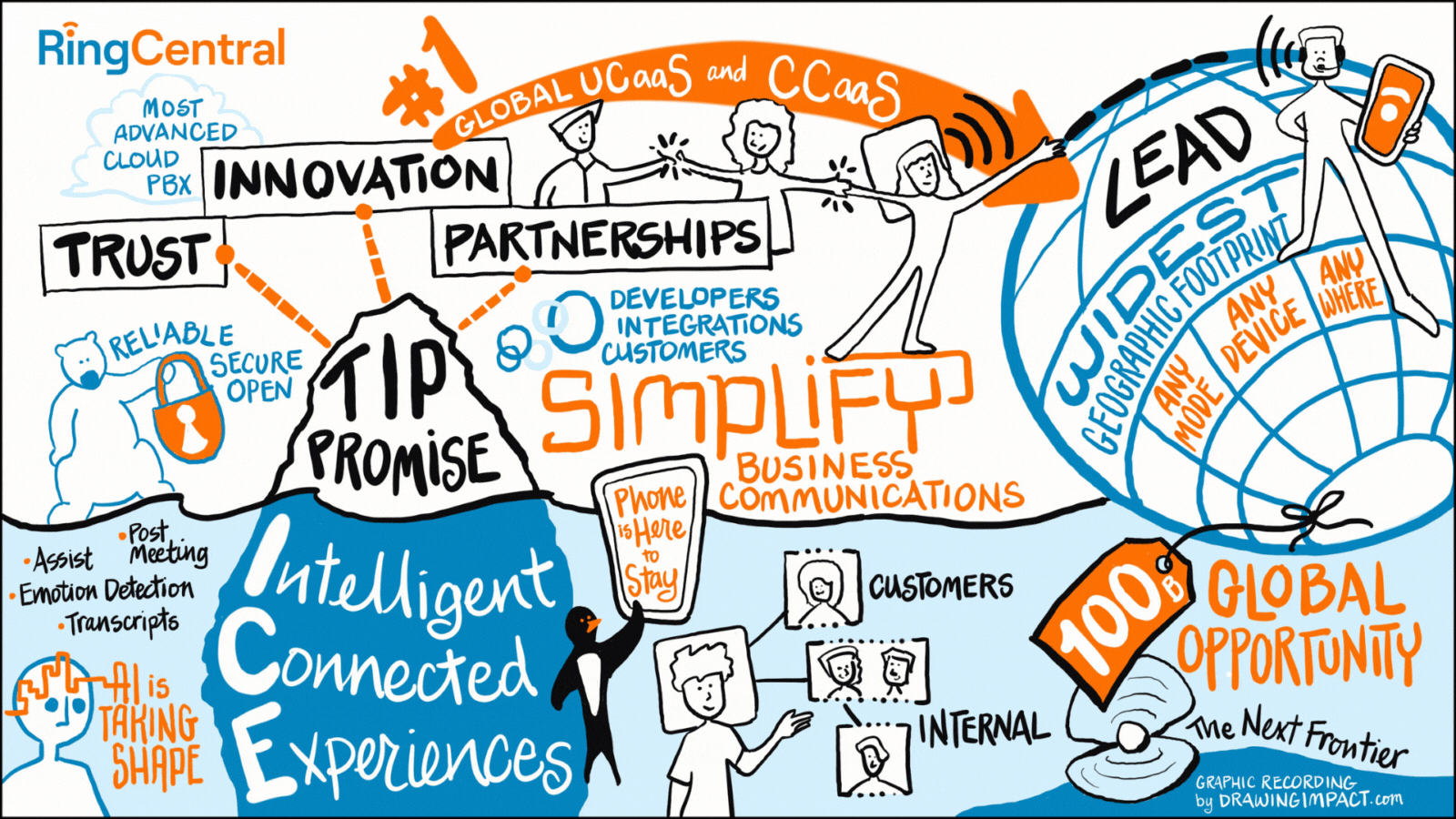As the Greek philosopher Heraclitus stated: nothing is constant but change. And with the amount of innovation in our industry, year in and year out — Heraclitus could easily have been talking about enterprise communications.
In 2022, we saw applied AI begin to make meaningful contributions to the meeting experience, to the customer experience, and to agent assistance. We saw UCaaS begin to permeate into adjacent spaces like events and the metaverse, and APIs continue to integrate into everything and everywhere we work. Change is constant, and 2023 won’t be an exception to Heraclitus’ rule.
So as we start 2023, what changes will happen in the new year? We asked a handful of industry experts in the analyst community to see what they thought. Here is what they shared with us, along with my takeaways on their predictions:
Sheila McGee-Smith, President & Principal Analyst, McGee-Smith Analytics:
“Automation of customer care – using digital channels and conversational intelligence – will progress from innovators to early adopters but not replace the voice channel. The CX market had an object lesson this December, when a US airline announced the end of voice contact center support. Nobody needs that kind of damaging attention to their brand.”
The takeaway: Consumers will always want the ability to talk directly to an agent if their issue is too complex or becomes too frustrating for an automated interaction. I completely agree with Sheila that we are going to see the need for digital channels and voice-centric contact center platforms, plus a boom in the use of conversation intelligence augmenting customer support.
Denise Lund, Research Vice President, IDC:
“There has been minimal differentiation amongst traditional UCaaS vendors in the past several years. Most of the industry has pivoted to platform capabilities almost in unison. So in the next year, we should see a few of these providers break out with a host of integrations that put UC&C- and the data it creates – where people are working. This will enable connections, enable seamless work, and enable new metrics.”
The takeaway: Speaking to the constant challenges in this market, differentiation is paramount for survival for enterprise comms vendors. Innovate or die, but innovate where it matters to our customers. I think we are going to see a lot of innovation in the industry around making data available and actionable at the point of work and at the point of customer care which will make intelligent, connected experiences a defining differentiation for those vendors who can effectively enable them.
Blair Pleasant, President & Principal Analyst, COMMfusion:
“In 2023 I’m expecting to see more focus on the best ways to deploy various AI capabilities, ensuring a good user experience. There will be more AI best practices, as organizations learn from others what works and what doesn’t work. Businesses will be more thoughtful about how they roll out AI, identifying the best use cases, and making it a better experience for both employees and customers.”
The takeaway: Excellent customer-first user experiences are critical. AI will increasingly be embedded within UCaaS and CCaaS to help users close gaps between one’s access to information and communications, which will lead to better outcomes and more productive decisions. This will be game-changing for employee and customer experiences.

Zeus Kerravala, ZK Research:
“AI in video meetings is just getting started and for it to show real value it has to be used to solve harder problems. Transcription is nice, but meeting notes are better. So I’m pretty excited about AI being used not just during the meeting experience but also in the pre- and post-meeting experiences as well.”
The takeaway: I couldn’t agree more here. I think the entire tech sector has learned that AI for AI’s sake isn’t going to make anyone better off. We’ve gotten past talking about meeting fatigue, which is great. We all need less fatigue in our lives. But the industry does and should have higher aspirations. Better applied AI in meetings will not only make meetings shorter, but will also make post-event actions easier and more structured. This is one area I am confident we’re already seeing a lot of innovation around and where we’ll see more in the future.
Jim Lundy, CEO & Lead Analyst, Aragon Research:
“Micro video will rise in 2023 and along with it a surge of short-form, user-generated content with all the comments that entails. The use cases for micro-video center around learning and communications. For learning, the right videos can allow a person to see how to set up a product or for a technician how to fix it. On communications, we see micro-video being a key part of employee engagement.”
The takeaway: Jim’s prediction is quite interesting. Whether you’re on YouTube, TikTok, or Instagram we’ve all seen videos from various platforms. And yes, we’ve seen a lot of choreographed dancing and puppies and kittens videos, but employees and customers alike respond to quick-fix videos and microinstruction. Micro video applied to the way we work and communicating business information will be very interesting in the future – especially when hybrid work is here to stay, and people are operating on different schedules. Micro video allows easier asynchronous business communication in a global, hybrid environment.
Dave Michels, Principal Analyst and Founder, TalkingPointz:
“The metaverse hit a peak in 2022 and the hype will continue to wane in 2023, but video meetings in the metaverse will start to show ROI versus overhyped applications like gaming.”
The takeaway: Time will tell with the metaverse. I’m a big fan of the metaverse – and for it to take off beyond video gaming will require broader deployment of 5G Edge Compute instances and use cases built around specific industries such as healthcare, retail, manufacturing, and more. I agree with Dave that there’s been over-hype, but maybe this has overshadowed the practical potential of the platform. The metaverse will clearly be important, however still likely to be several years out before we’ll see any real traction in business applications.
Elka Popova, VP Research, Frost & Sullivan:
“Enterprise telephony-led communications upgrades will still dominate in certain verticals and use cases. However, there are notable shifts in the development and go-to-market strategies driven by a few trends, one of which is the increasing customer preferences to purchase a wider breadth of services from a consolidated set of providers.”
The takeaway: I wholeheartedly agree with Elka and am excited about the opportunity in vertical industries to elevate with telephony-led communications upgrades. Also, Elka’s view that customers will prefer to purchase from a consolidated set of vendors is not a surprise — and it’s about time.
From the very beginning, RingCentral has been focused on simplifying business communications — transforming communications from on-premises to the cloud, and putting all of your conversations in one place. Customers should never have to tolerate the toggle tax of separate apps, and should expect to have a consolidated experience with Message, Video, and Phone in a single app – and also have the opportunity to tightly integrate the contact center for a cohesive UCaaS & CCaaS combo experience.
These are the things that bode well for RingCentral. I’m proud of the fact that RingCentral delivers significant value, whereby our customers saw 53% increase in ROI, 41% increase in employee productivity, and 48% increase in customer satisfaction from using our solutions, based on an August 2022 survey of more than 1,000 customers. As value, ROI, and payback on IT investments continues to be an important driver, I think we will continue to see RingCentral well positioned in the changing landscape and aligned with the trends for 2023 and beyond.
Originally published Jan 05, 2023
Looking For Startup Consultants ?
Call Pursho @ 0731-6725516
Telegram Group One Must Follow :
For Startups: https://t.me/daily_business_reads




